Today we are looking inside an 8TB NVMe SSD. Specifically, this is an Intel DC P4500, but not just any DC P4500. This is a “ruler” form factor SSD. These days, many still use the term “Ruler SSD” to refer to the newer E1.L and sometimes E1.S form factors. In this article, we will also show you the important differences.
Inside the 8TB Intel DC P4500 Ruler SSD
We first saw the Intel Ruler SSD in 2017. At that time, it was an Intel-specific standard that actually was deployed by (at least) one public cloud provider. The promise of the new form factor was a SSD form factor more aligned to flash storage than traditional rotating media.
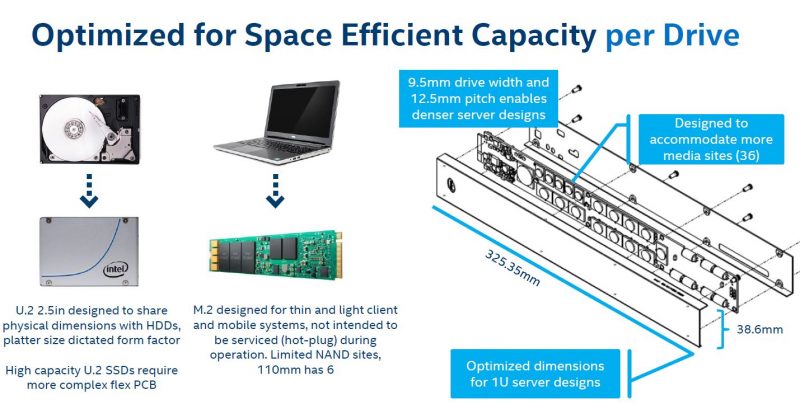
The Cliffdale Ruler drive itself is a 325.35MM SSD. You may recall from our E1 and E3 EDSFF to Take Over from M.2 and 2.5 in SSDs piece, that the E1.L is a 318.75mm long SSD.
Here is a shot of the ruler SSD:
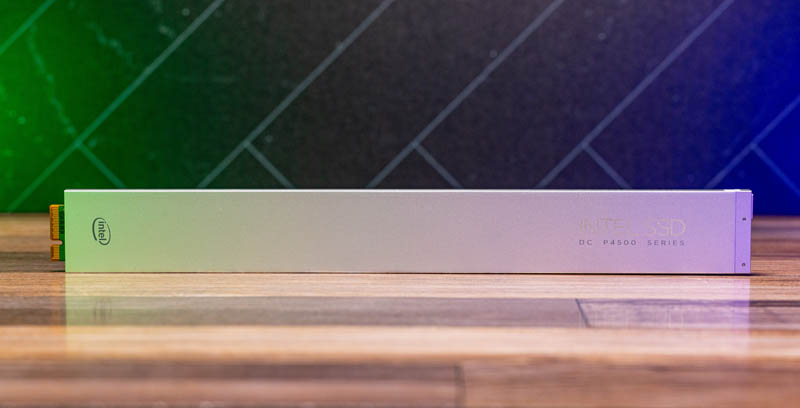
As one can see, this is an Intel SSD DC P4500 series drive.
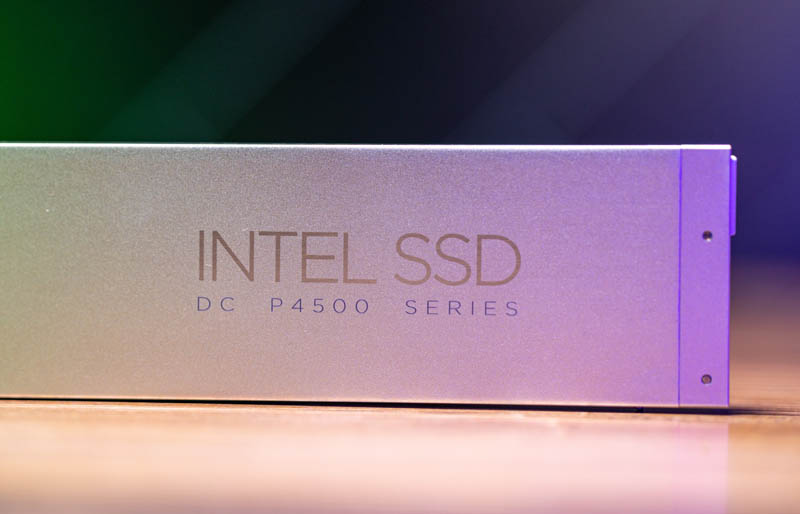
On the end, one can see a latching mechanism with status LEDs. This is not part of the EDSFF E1 drives. Latches are up to the vendor in EDSFF. Here we are using a Micron 7400 Pro E1.S drive as an EDSFF model.
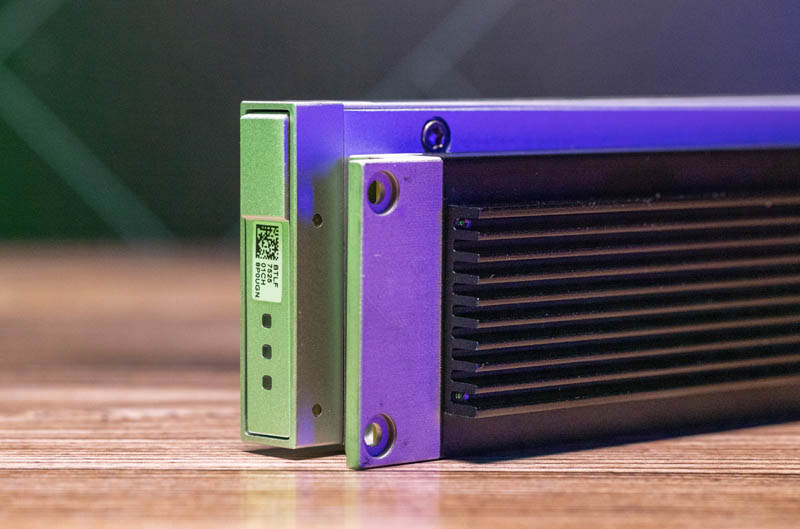
Here is the actual latching/ LED for the ruler SSD. As one can see, it is mounted differently than we would see on the EDSFF drive. It is directly attached to the PCB via screws that go through the chassis.
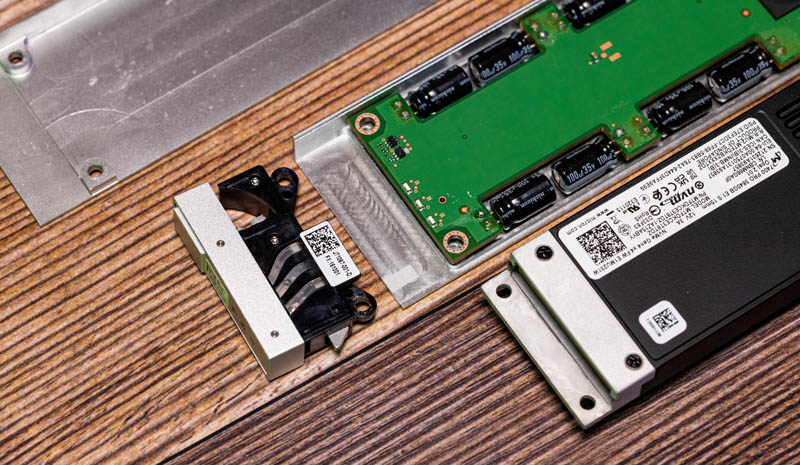
Here is the connector end of the Intel Ruler SSD:
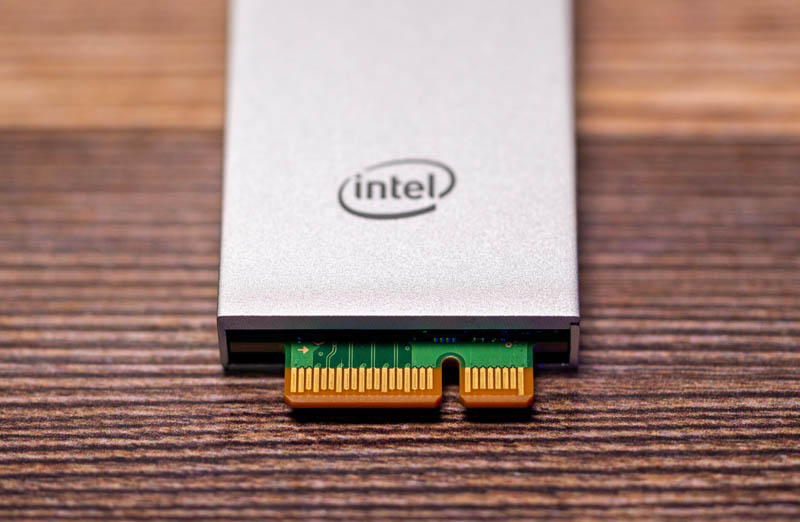
Here is an angled view of the connector with the 8.0TB label that includes regulatory markings.
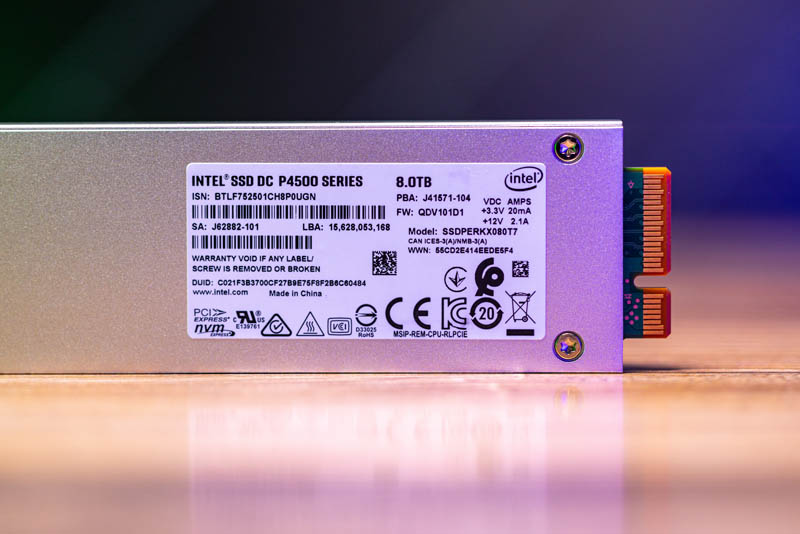
Here we have the E1.S drive on the left and the Intel ruler SSD on the right. One can see the Intel Ruler is taller. E1.L is a longer version of E1.S so that applies in either case.
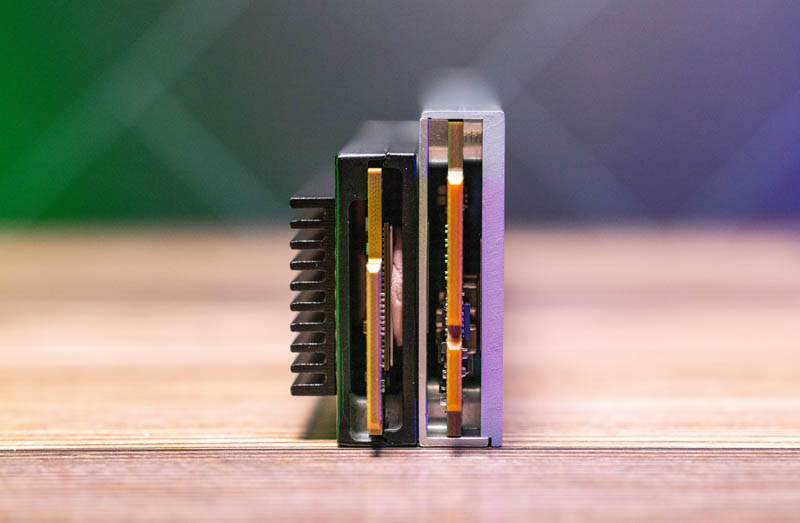
Here is an angle view. One can see that there is a notch and a larger connector on the Intel Ruler versus the more compact EDSFF connector.
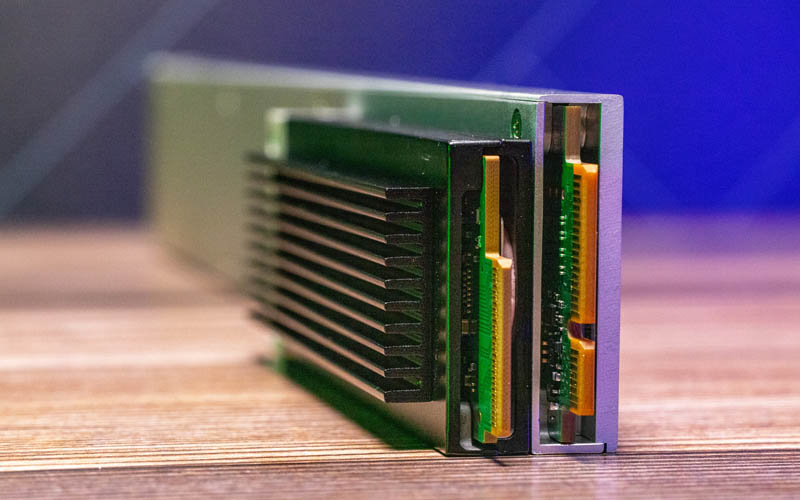
Also, the contact lengths on the EDSFF drives are much shorter as we can see below.
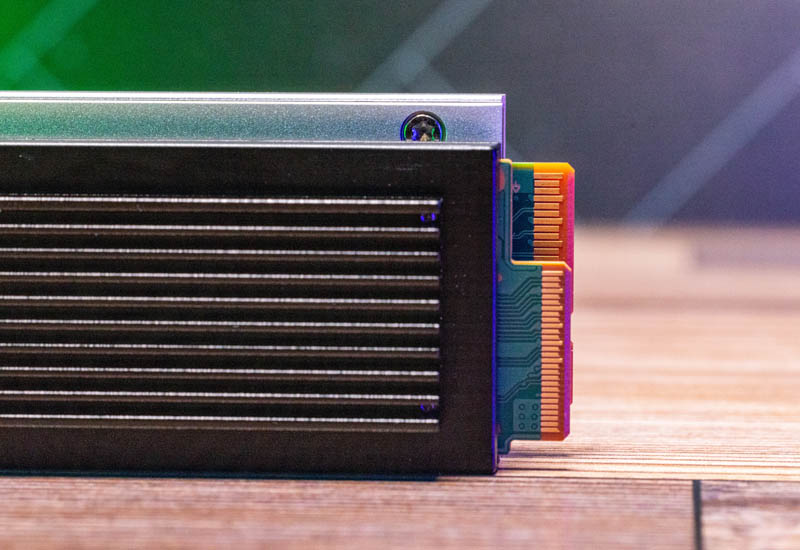
Opening the P4500 Cliffdale SSD, we are using a T8 driver and there are eight screws.
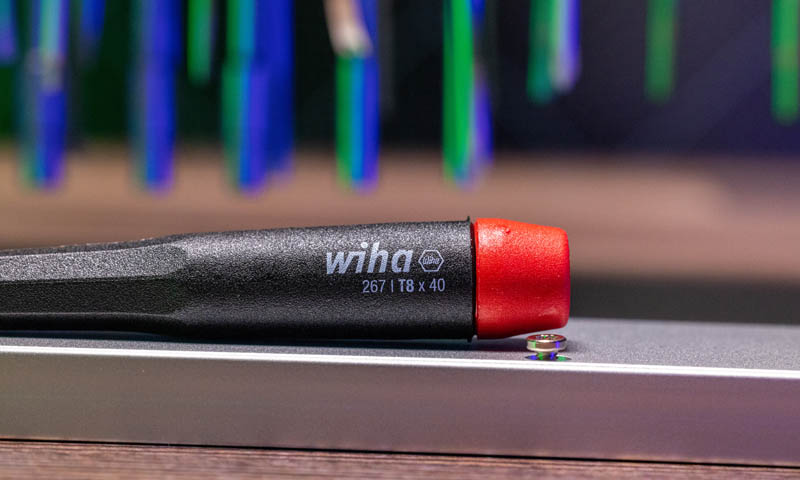
Inside we can see a connector, then NAND and DRAM, followed by capacitors.
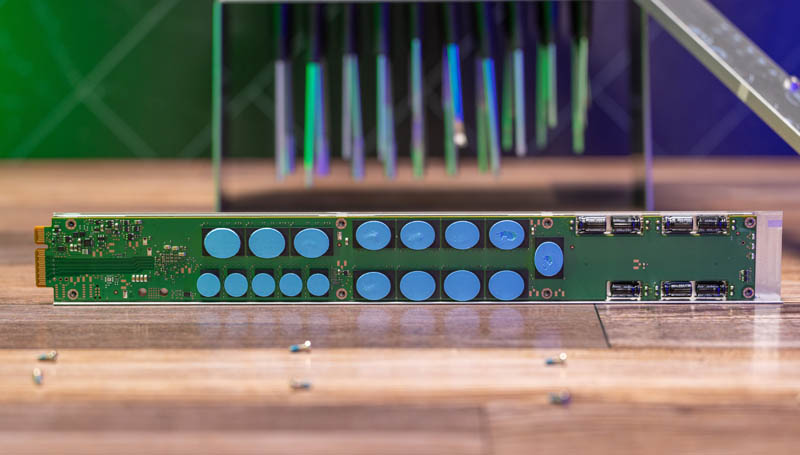
Flipping over to the other side, we can see capacitors, NAND, DRAM and the controller.
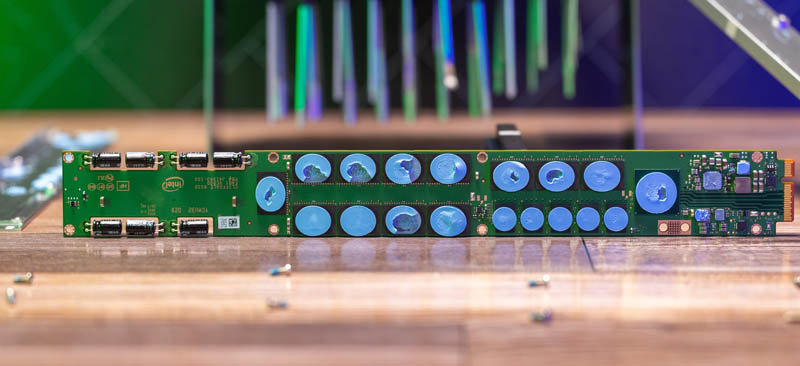
Here is a close-up of the controller to the connector area.
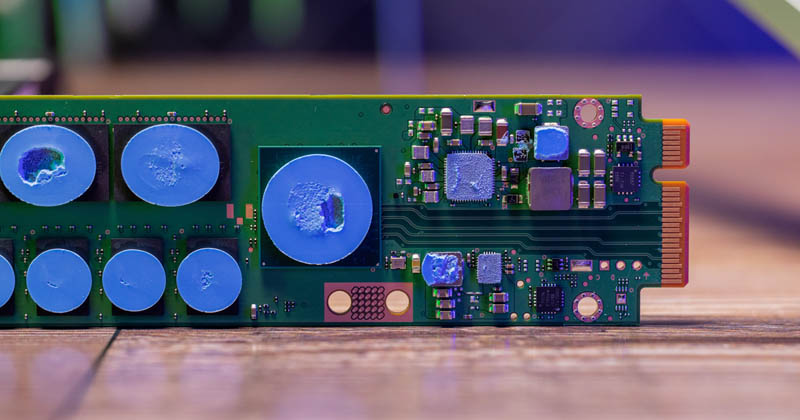
Here is a close-up of the capacitor side. One can see the PCB says “Cliffdale RSSD” and our sense is “RSSD” means “Ruler SSD”.
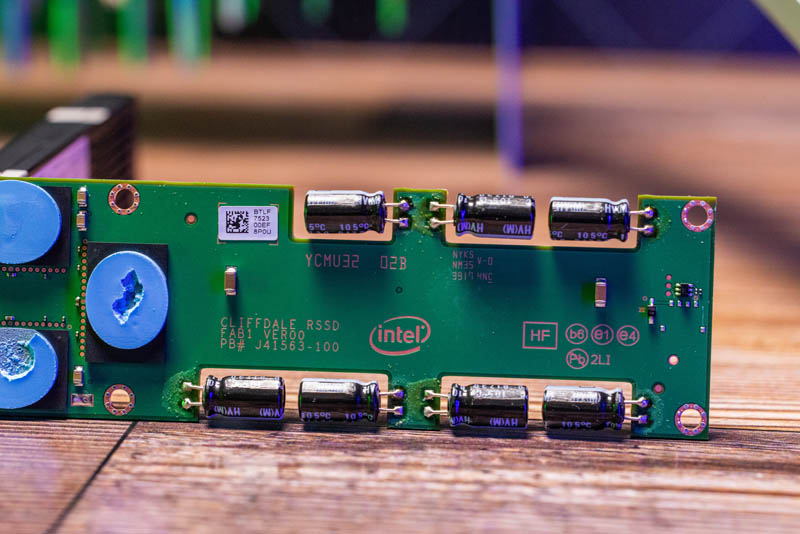
The seven large capacitors sit on a relatively barren portion of the SSD.
Final Words
Many people confuse E1.L and “Ruler” SSDs. Hopefully, by sacrificing an 8TB ruler SSD you got to see two things. First, what is inside one of these Intel (now Solidigm) SSDs. Second, we hope you have some idea now on why we do not call EDSFF E1.L drives “ruler” SSDs. The intent in terms of providing enough area for many NAND packages as well as efficient cooling is similar between the two designs. While the original Intel Ruler SSD certainly inspired E1.L, they are not the same drives. We have seen users suggest they are compatible, so we hope this piece shows why that is not the case.

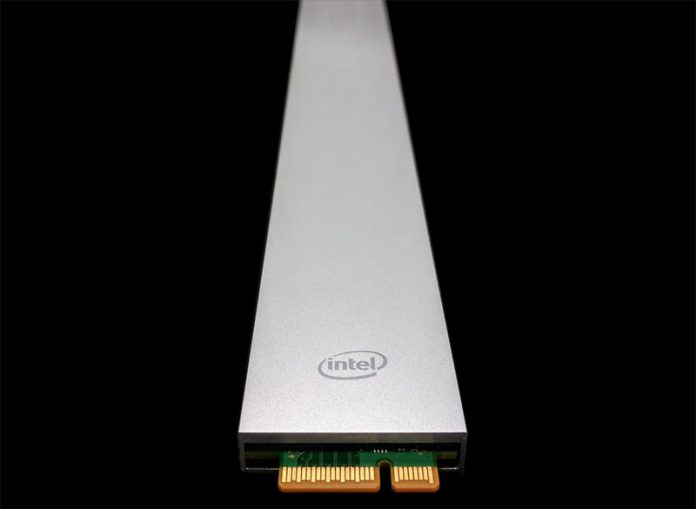
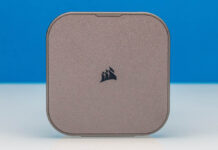
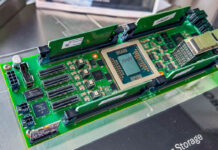
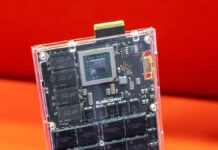
I think Cliff should have done this review since it’s Cliff-dale.
SSDPERKX080T7 street price is $3400. Also, intel already discontinued the model :(
That time when STH tore apart a $4000 SSD to see what’s inside.
I assume that engineers smarter than I am had their reasons; but I’m a bit surprised that neither form factor took the opportunity to specify that the host provide a certain amount of backup power for a certain number of seconds, rather than leaving it to the drive to cram capacitors in.
The cost of the caps is, in the context of an 8TB drive, presumably a rounding error, but cylinders just do not pack neatly into rectangular enclosures; and around 1/3rd of the PCB area is effectively barren to make room for them.
This ‘ruler’ form factor is weird. The enclosure is 325 mm long, and 38 mm wide, so the usable PCB area would be maybe 300 x 30. An ideal shape is circular (Ha!) but practically square. Here you need to route all data & power for upto 300mm, meaning signal and power losses, possibly reamplification / buffers with its latencies, interferrence etc and horrible constraints on the design and component placement.
@Jay Kastner: I’m a little surprised that they couldn’t find a way to shave down the amount of enclosure and overhead to allow at least 40mm out of a 1U’s 44.45mm; but I’d assume that the demands of 1U systems mean that customers are always going to want storage deeper and narrower than one would prefer from a pure PCB design perspective.
@fuzzyfuzzyfungus: 38 out of 44mm is not bad, considering it looks like folded sheet metal, with all it’s issues. Maybe there were other use cases planned, no idea how much power you can draw from the back connector, but airflow & cooling is bad in a ‘tunnel’ enclosure like this